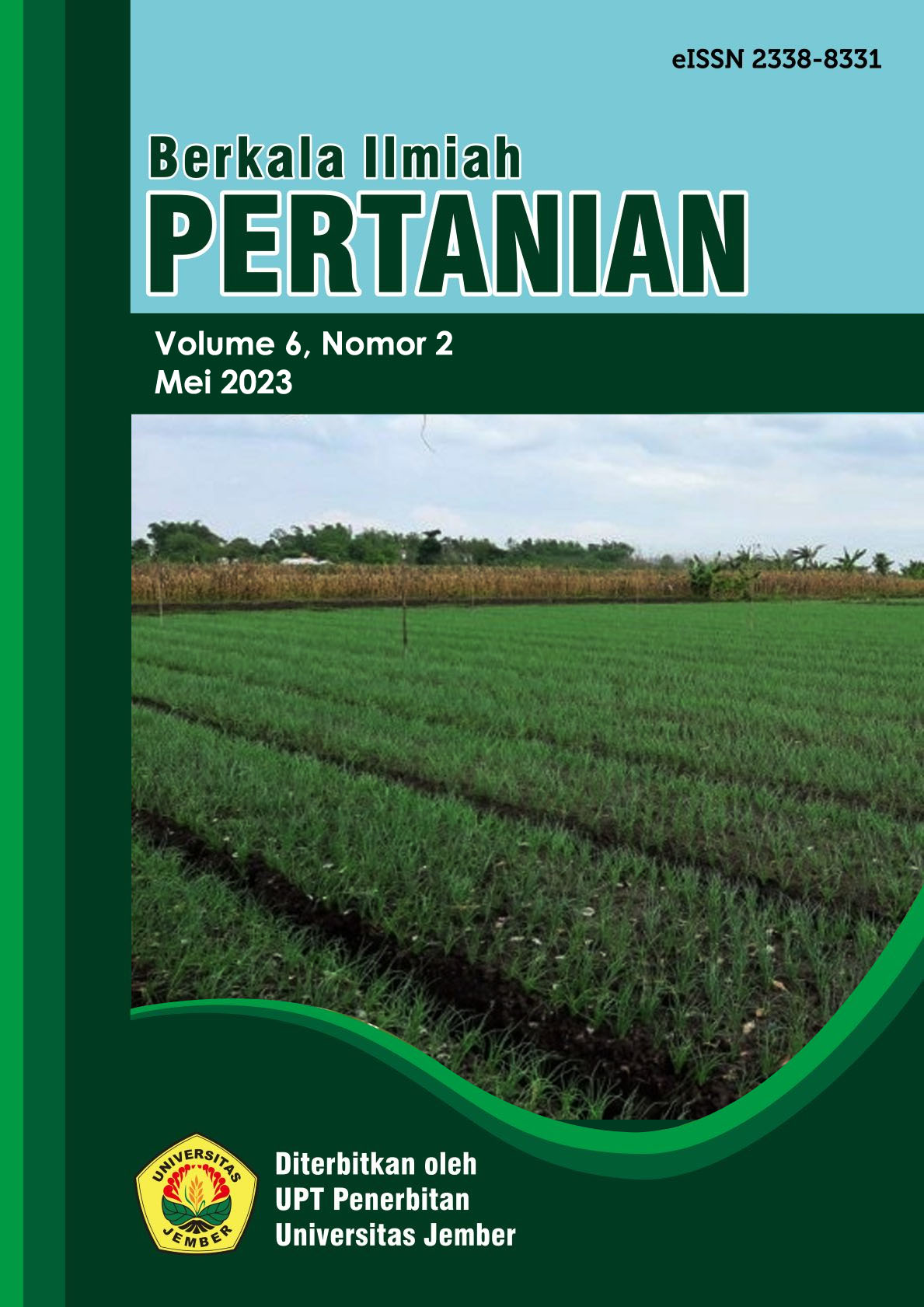Penentuan Laju Infiltrasi Tanah pada Beberapa Kondisi Vegetasi di Kebun Raya ITERA
DOI:
https://doi.org/10.19184/bip.v6i2.39248Abstract
Measuring the rate of infiltration in an area is important as one of the basic actions for land management. The existence of infiltration allows the soil to temporarily store water so that it is available for absorption by plants and soil organisms. The ITERA Botanical Gardens, which aims to conserve Sumatran plants ex-situ, needs to be supported by successful revegetation. The infiltration rate is an indicator of the physical condition of the soil during the revegetation process. The purpose of this study was to calculate the soil infiltration rate in the ITERA Botanical Gardens under different vegetation conditions, namely under sengon (Falcataria moluccana) and grass stands. This research is an experimental study that measures the rate of soil infiltration using a double ring infiltrometer with a diameter of 15 cm and 30 cm. The infiltration rate was then calculated based on data on changes in water level over time intervals (∆h) and changes in measurement time intervals (∆t) obtained from field measurements. Infiltration in the area of ITERA Botanical Gardens is influenced by the condition of the vegetation above the ground. Lowering of the water level in the ring on grassy land reaches a constant faster than under sengon stands. The infiltration rate under Albizia stands is faster than on land with grassy vegetation. This requires the act of planting vegetation that has deep roots, on land that is still planted with grass.
Downloads
Downloads
Published
Issue
Section
License
Authors who publish with this journal agree to the following terms:
1.Authors retain copyright and grant the journal right of first publication with the work simultaneously licensed under a Creative Commons Attribution-NonCommercial 4.0 International License that allows others to share the work with an acknowledgement of the work's authorship and initial publication in this journal.
2.Authors are able to enter into separate, additional contractual arrangements for the non-exclusive distribution of the journal's published version of the work (e.g., post it to an institutional repository or publish it in a book), with an acknowledgement of its initial publication in this journal.
3.Authors are permitted and encouraged to post their work online (e.g., in institutional repositories or on their website) prior to and during the submission process, as it can lead to productive exchanges, as well as earlier and greater citation of published work (See The Effect of Open Access).



















